Positive Health Online
Your Country

Biolumanetics and Classical Homoeopathy
by Charles Wansbrough(more info)
listed in homeopathy, originally published in issue 50 - March 2000
In the March 1998 issue (No. 26) of Positive Health, Thrity Engineer wrote an article explaining and expanding on a technology that was called Biolumanetics. She was the first individual in this country to be able to use this technology. Developments regarding the expanding horizons of this form of diagnostic technology have led me to further expand on its importance and value.
Readers who do have this article must bear with me, as I summarise the main aspects of the technology. A more detailed exposition, written by Patrick Richards himself, may be accessed on the Internet web site www.biolumanetics.net or see also www.positivehealth.com for more information.
Patrick Richards came upon the entire process quite accidentally when he designed a machine to balance air temperatures for efficient heat energy management. The instrument, called a Luminator, not only created a uniform temperature gradient, but also unexpectedly seemed to improve the health of those individuals working in its environment.
In further investigations, and over a period of eighteen years, he found that the Luminator had created an unusual electro-magnetic field whose main effects he deduced were not easily explained using present scientific paradigms.
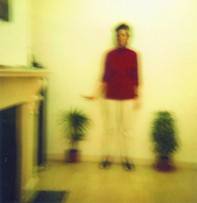
1 Example of incoherence (using opium)
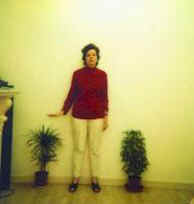
2 Example of coherence
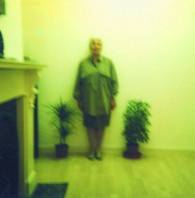
3 Base photograph
![4 Patient holding an incorrect remedy (Lacerta agilis [Green Lizard] 200)](/img//img/images-original/dbimg/wans50d.jpg)
4 Patient holding an incorrect remedy (Lacerta agilis [Green Lizard] 200)
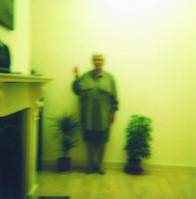
5 Patient holding another incorrect remedy (Shark's tooth 200)
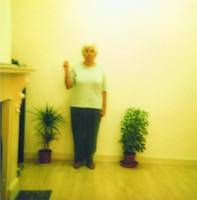
6 Patient holding the correct remedy (Androctonus amoreuxii hebraeus – a scorpion found in Israel)
It seemed to alter the magnetic field and using a standard magnetic compass, a change of up to 38 degrees to the west from normal north was indicated. Sensitive light meters also indicated an increase in light emissions in the working area. He concluded that such an extraordinary electro-magnetic field seemed to isolate individuals from those of a normal environment, creating a type of 'null field'. As he comments on the web site, neither himself, nor any of my colleagues have to date been able to explain this phenomenon scientifically. It falls into the category of a scientific anomaly!
Some further explorations using photography in the altered environment led him to an unexpected discovery. Photographs taken in the altered field produced anomalous images. The pictures changed – some were out of focus, some were clear, and some had multiple images. Using the same photographic procedure in a normal environment did not produce similar images.
By trial and error, over many years, he was able to draw certain conclusions about these photographic images:
* Photographs of people suffering health challenges were vague and distorted;
* Photographic images of healthy individuals were clear and crisp.
In other words, a photograph taken in the environment that came out clear represented a coherent and stable state of health, while any incoherent images represented incoherent states of ill health.
He then noticed that by introducing different materials, one at a time, into the field of the patient and then taking a photograph, the images captured changed. He was then able to draw further conclusions that a correct prescription changed the photographic image to that of a clear picture, which always restored vitality and health to that individual.
Furthermore, by the introduction of various medical interventions, ranging from the subtle effects of homeopathic medicines, acupuncture intervention, the use of Ayurvedic medicine and even orthodox drugs, the photographic assessment as to the degree of coherence that individuals demonstrated in respect to all these different modalities gave crucial information in restoring coherence and health to that individual.
Patrick coined the term bioliminal, coming from the Greek bios (life) and limen (the limit below which a stimulus is not perceived), to indicate the nature of this phenomenon.
The term was specifically tailored to study and legitimise this area of research, and emphasise the subtle nature of this investigation, since by using the bioliminal field, one is able to gain information below the threshold of conscious awareness, which will enhance or detract from the coherence of the healthy state. When the individual lacks sufficient integration to exist in harmony with his changing environmental conditions, it is possible to introduce subtle energy information into the field of the individual to restore harmony. Using Bio-Liminal Photographic imagery, it is possible to assess the degree of coherence that an individual displays with respect to the various effects of subtle energetic information.
Explanations
Different explanations have been put forward for this phenomenon; one of the most effective is in terms of bio-photons (particles of light) being emitted by the cells of that organism.
It is widely accepted that all living systems exhibit a very weak photoemission of up to a few hundred photons per second in ranges from at least ultraviolet to the infrared range. In the work of Dr Fritz-Albert Popp, bio-physicist at the Max Planck Institute in Germany who investigated the nature of light emissions from organisms over 20 years, it was concluded that the characteristics of light emitted by diverse organisms point to the existence of a coherent photon field underlying the organisation of all living organisms.
The machine the Luminator, designed by Patrick Richards, creates an alteration in our normal electromagnetic field, not only by changing the magnetic dipole in the environment but also by changing the quality of light in that environment. The effects of the machine on the air molecules are to cause the room light to change from scattered or incoherent light to lighting which is in phase (laser-like in quality) and coherent, with the light emitted by the cells of all materials within this environment.
By creating this altered field, and thereby changing the nature of the environment so that all materials including life-forms are effectively in phase, it was found that the quality and quantity of light being emitted by the cells of living organisms varied according to the degree of integration they showed with respect to their own health and the environmental challenges present. It was empirically validated, after many years of observation, that a clear photograph represented a state of coherence and well-being.
In most alternative medical models it is an accepted premise that all life-forms owe their existence to subtle levels of intelligent information that animate and maintain harmony. Such sentiments are at the heart of most complementary models, from Chinese medicine which believes that our health is mediated by balancing Chi, a term used by the Chinese to explain the energetic interactions that occur in a life-form, to Homeopathy which explains similar interactions in terms of the vitality of the organism. The purpose behind such models is the belief that by influencing this information in our evolving patterns, changes can be brought to bear both on the physiological and psychological levels of the organism.
Life as a biological phenomenon is seen to be in a state of continuous flux; organisms are required to continually adapt themselves in order to maintain levels of well being and harmony. A failure to do so may result in illness or even the death of that organism. In the above example, each of the materials the subject holds has its own chemical integrity and therefore acts as a source of information.
When this source of information is introduced into the field of that individual, it is evaluated by the internal adaptive resources unique to that subject and a reaction response is triggered. When the reaction response is positive there is an increase in the quantity of photons (light) being emitted by the cells. A negative reaction response creates a reduction in the quantity of photon (light) emissions.
This system is invaluable because the reaction responses of an individual to a given material (be it a drug, vitamin, homoeopathic remedy, Chinese herb etc) can be safely evaluated: when the material is withdrawn from the field of the subject under scrutiny the reaction response ceases of its own accord.
A system such as this provides a tool to see the outcome potentials of a wide variety of materials safely.
My Own Interest
When I met Patrick, I had been in research for some years, and was practising part-time as a homeopath. My own reaction to the above process was very sceptical at first, but because Patrick had created his own subtle medicine solutions using a modified magnetic field (called chelate), my interest was aroused. My own research had taken me in similar directions, so I remained open minded with respect to the technology.
In theory, the bioliminal information captured in his altered environment should apply to any therapeutic modality, assuming that the clarity obtained in his imaging corresponded to an increased clarity and sense of well being. In a rather unique turn of events, Patrick Richards reverse engineered an entirely novel medicine, by first creating a diagnostic technology, and then created a solution of subtle medicines that could be used with the diagnostic modality of his altered environment.
My interest was aroused when he admitted that he had tried a number of different medical modalities and used his bioliminal imaging technology to check the validity of these modalities. In theory, he said that one should be able to find the correct solution to a medical modality using his technology. I decided to take up this challenge and explore the potential limits of this technology with regard to homeopathy.
Homeopathy as a medicine is now well established as one of the main medical models of the complementary medical establishment, and today has enough credibility to warrant scientific research and academic posts at some universities. Public demand has forced a change on the part of the orthodox establishment to accept the possibility that we can sensibly postulate life as an energetic or vital process manifest in an organism but not necessarily confined to only its physical structure. This energetic or 'vibrational' signature can be matched and altered using homeopathic medicines, and is one of the fundamental assumptions of homeopathic medicine. Most colleges of homeopathic medicine train individuals for a period of four years primarily in Classical Homeopathy, an effective teaching model that has seen homeopathy become a well-established discipline worldwide.
My interest in Patrick's technology, assuming his observations to be correct, was to evaluate his technology in terms of classical models of homeopathy or the reverse, to evaluate classical homeopathy in terms of his technology.
It has taken over two years to evaluate and explore both disciplines fully.
Biolumanetics and Homeopathy
In theory, Classical Homeopathy engages in a process of case taking that includes the whole profile of a patient from their clinical diagnosis, and a full history of their illness, through to a profile of their personalities in terms of their mental, emotional and psychological makeup. After this process has taken place, the homoeopath then proceeds to assess the most likely remedy that matches each profile, and hopefully the patient returns in a month with a dramatic improvement in health. If the prescription was not effective, then another assessment is made and another remedy prescribed, hopefully with better results.
The efficacy of homoeopathy has always lain in the hands of experience, and in the early years a form of apprenticeship was the most efficacious method of learning what can be at times a daunting task. There is ultimately no substitute for experience in this heuristic process, since each prescription made in homoeopathy always falls under the category of a 'guesstimation'. There are no correct prescriptions in homoeopathy; until the patient has returned with a full evaluation, every prescription in homeopathy is a plausible guess. The homeopath is a skilled interpreter of facts.
The initial guess is invariably a product of the homeopath's training and his outlook on life. Together they create the best probable insight that will lead to a correct prescription. Yet that 'best guess' is always in the grip of a potential certainty, like a 'virtual prescription' until the patient returns to confirm the accuracy of that prescription.
The question I asked myself was could the 'bioliminal technology' help in this process by eliminating the uncertainty of an estimated prescription?
The answer was a resounding yes.
The protocol evolved is simple. We invariably take up to two hours for both the first and second appointment.
1 The patient arrives, and a base photograph is taken in the 'altered field'. This acts to establish a baseline of coherence.
2 A homeopathic case is taken for an hour by myself or a fellow colleague. We work as a pair of homeopaths, as I have found the protocol to be less exhausting with two of us working to find the correct prescription.
3 We then discuss the problems with the patient and look for a prescription by asking the patient to hold each remedy, which we think, might be a correct prescription until a photograph becomes crystal clear.
Photographs of a Case
We have found that a correct prescription for that patient at that moment in time will invariably alter the photographic image and produce clarity. A correct prescription that dramatically changes the well being of the patient is almost always associated with a completely clear image.
From our own experiences of using bioliminal photography, we have found that we always have to improve on the clarity of the baseline photograph to create a health change. In some cases, if we find that after two hours we cannot improve on the clarity of the baseline photograph, we ask the patient to return for another appointment.
An Example
This is a very brief synopsis. A homeopathic case was taken of the following patient, seventy years of age with no significant health problems, except for some arthritis of the left hip, and an ongoing problem with constipation which had started in her late teens and for which she had taken laxatives and various other medicaments for over fifty years. She had been to various health practitioners for this severe problem but resorted to controlling it through a stringent diet and an unhealthy use of laxatives.
Various homeopathic remedies had been tried but nothing had ever improved the constipation.
We took the case, took a Base Photo 3 as shown, and then analysed the case. Finally, after some seven photos holding different remedies, all of which were unclear, we came to Androctonus, a recently proved remedy which made her crystal clear as shown in Photo 6.
The result of the correct prescription was that within two weeks, this patient's bowel movements corrected themselves, and she has been on the same remedy for over six months in a very low dosage. In the words of the patient 'it is a miracle', since at no time in her long life have her bowels worked so well. This case demonstrates the assumption in homeopathy that a correct prescription will invariably bring about dramatic results. The diagnostic clarity of the 'bioliminal technology' just brings another level of surety and evaluation to the entire homoeopathic therapeutic process.
We have also found that if the remedy was beneficial for the patient, invariably his baseline photograph at his next session will always be clearer than his last base image. If the patient returns and a clear photograph is imaged, this consistently indicates that his treatment has finished, since we cannot prescribe a remedy to improve a state of complete clarity!
Equally interesting was a multiple sclerosis case in a wheelchair, who became stable using homoeopathy and the diagnostic technology. What was fascinating, however, was that when his system decided that we could do no more for him, the image went crystal clear.
It has been a daunting task trying to match and consolidate the diagnostic technology against my knowledge of classical homeopathy, and ironically it has forced my colleague and I into a position of complete honesty and integrity, for the entire session and dialogue created between patient and practitioner has been drastically changed. We, as practitioners of homeopathy, are no longer in positions of power and certain knowledge; our roles have been subtly changed to those of mediators where we hope that our knowledge matches the therapeutic encounter. It is a unique situation and differs from most other therapeutic models by assessing disharmony in terms of clear solutions with a minimum of intervention. Its role is ultimately to empower a patient to find his own solutions through the energetic dialogue that is enacted through this process of bio-liminal technology. The novelty of combining the bioliminal technology with the classical methodology of homeopathy is for the practitioner to reduce his 'guesstimations' of the correct remedy and for the patient not only to empower himself, but also to be able to assess his state of health and engage in a therapeutic process of well-being.
It has been an arduous journey trying to interface the diagnostic clarity of the bioliminal technology with my own skills as a homoeopath, and has forced me into a constant process of improvement, as each therapeutic encounter encapsulates a dialogue of solutions. Each patient comes face to face with his own process of clarity since each image is an instant assessment of a potential outcome, whereby he can anticipate his own state of well-being and assess the integrity of his practitioner. The role of the therapist is reduced to that of a transitory empathic mediator who takes courage in the minimum of interference and the optimum outcome of well-being.
Perhaps the dialogue between individual and outcome was far better understood by medieval philosophers.
Robert Grosseteste, a medieval scholar (1175-1253) who is widely regarded to be one of the first true scientists, wrote a small masterpiece, De Luce. In it, he describes the story of creation in terms of the modification of light. To this scholar, light possessed two aspects: one aspect was the light of our physical existence condensed into matter, and the other aspect was a light of intelligence embodied in the purely spiritual realms of the Godhead. Here, perhaps, we are seeing the light of intelligence being communicated through the process of bioliminal imagery.
Comments:
-
No Article Comments available